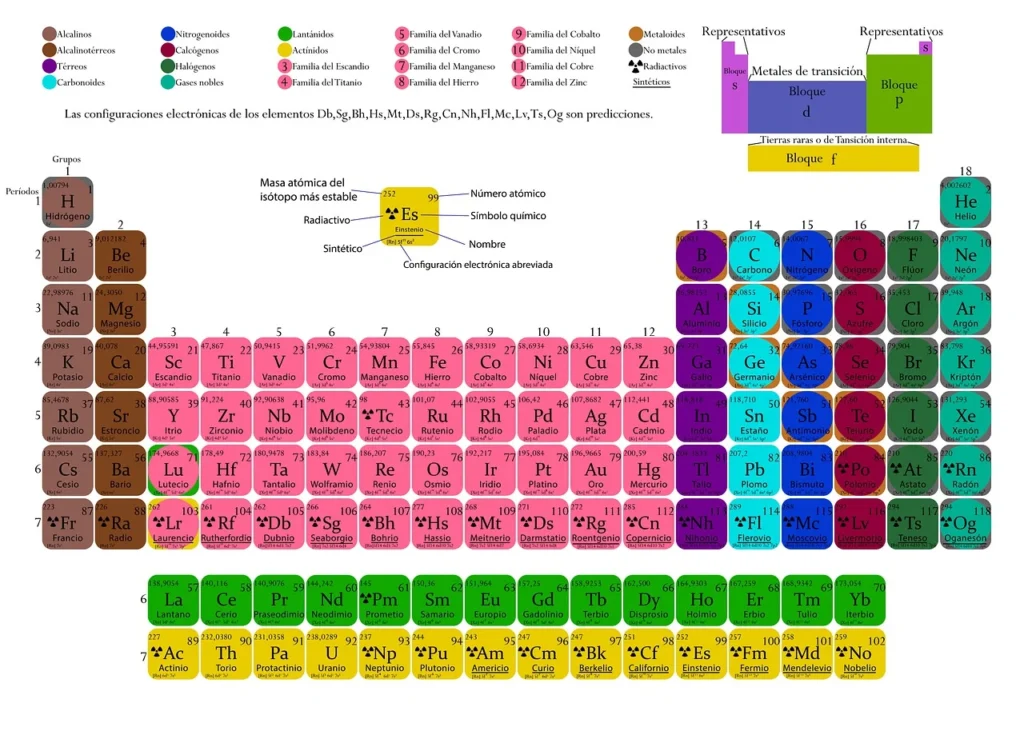Atoms are categorised is essential to understand chemistry. More than hundred elements already classifying and organised to their similarities and differences present in efficiency, clarity, and insight into their characteristics. This methodical approach facilitates the study and application of chemistry, particularly in domains such as environmental studies, materials science, and medicine, by helping us make predictions about elements and their interactions.
1. Organising Information :-
To learn all of the characteristics, responses, and actions of more than a hundred elements separately would be too much to handle. This knowledge can be arranged in an organised manner by classification, which greatly facilitates learning and memory. Scientists can concentrate on understand the behavior of groups rather than learning specifics about each constituent by grouping elements with comparable features.
Periodic table, groups and periods elements according to their atomic number, electron configurations, and recurrent chemical characteristics. By understand the behavior of one or two members, one can use this arrangement to learn about the character of the entire group. Because of their same outer electron configurations, elements in the same group have comparable chemical properties, which makes it easier to predict how they would behave in different scenarios.

2. Predicting Properties and Reactions :-
As we proceed across periods or down groups in the periodic table, classification aids in our understanding of tendencies across elements, such as variations in electronegativity, atomic size, and ionization energy. Without having to test each element separately, scientists can forecast how certain elements will behave in reactions.
Alkali metals, which are elements in Group 1 of the periodic table, exhibit comparable chemical characteristics, such as forming alkaline solutions and generating hydrogen gas when they react forcefully with water. Without doing a lot of testing, we can assume that an unknown element would act similarly by grouping it into this category.
3. Facilitating Scientific Discoveries :-
Scientific discovery is also accelerated by the classification of elements. Dmitri Mendeleev identified holes in the periodic table’s first arrangement of elements in 1869 and forecasted the presence and characteristics of undiscovered elements to fill them.
Later, researchers found elements that closely matched Mendeleev’s predictions, such as gallium and germanium. This classification served as a framework for future discoveries as well as an organisation of known elements, allowing scientists to continue identifying and forecasting new elements.

4. Applying Chemistry in Real-World Scenarios :-
Practical applications in a variety of disciplines, including materials engineering, environmental research, and medicine, are made possible by the classification of elements. For example, choosing appropriate materials for building construction, medical device design, or the development of new technologies is aided by knowledge of the characteristics of metals, nonmetals, and metalloids.
In medicine, classifying elements according to their characteristics and reactivity helps us understand their properties, such as iodine, which is necessary for thyroid function, or lithium, which is used to treat mental disorders. By classifying elements, environmental scientists can better control and mitigate the effects of pollutants by studying their behavior, such as the interactions of heavy metals like lead and mercury with biological systems.
5. Enabling Efficient Learning and Teaching :-
Students study through groups with common properties and periodic trends rather than learning each element separately, which lays a strong basis for more complex chemistry topics. For example, without having to study each halogen separately, students can rapidly grasp the importance of the elements of Group 17, the halogens, in chemical reactions and industrial uses by realising that they are reactive nonmetals.

Why do we need to classify elements
Note :-
Element classification is vital because it facilitates learning, organises data, and allows us to effectively predict chemical behaviors and features. Teaching, real-world applications, and scientific research all benefit greatly from this methodical approach. The classification not only serves as a roadmap for studying chemistry but also inspires discoveries and advancements, providing a structured way to explore the complex.
Key points :-
In 1800, only 31 elements were known.
By 1865, the number of identified elements had more than the doubled to 63.
At present, 118 elements are known.
Classification organises elements based on similarities in their properties, making it easier to study, recall, and understand their behaviors. It allows chemists to predict how elements will interact in reactions and provides a systematic structure to navigate complex chemical information.
By grouping elements with similar properties, classification reveals trends in characteristics like atomic size, electronegativity, and reactivity. This helps predict an element’s behavior based on its group or position in the periodic table, reducing the need for extensive experimentation.
Classification aids in various fields like medicine, environmental science, and materials engineering. For example, it helps identify elements suitable for specific medical applications or materials needed in industrial processes, making it easier to select elements based on their properties.
Early classification, such as Mendeleev’s periodic table, highlighted gaps that predicted the existence of unknown elements. This prediction later led to the discovery of elements with expected properties, proving the value of classification in guiding scientific research.
Classification simplifies learning by organising elements into manageable groups. For students, it provides a way to study general trends and behaviors of groups rather than memorising each element individually, laying a strong foundation for advanced chemistry topics.